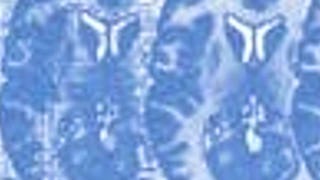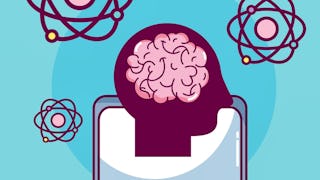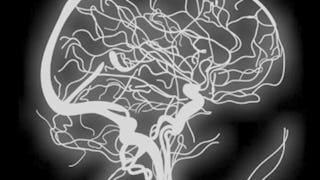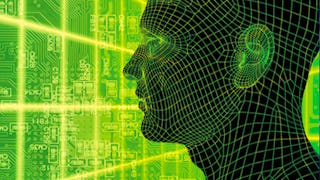The course "Neuroscience Methods" provides hands-on experience with cutting-edge neuroscience methods, equipping you to explore how the brain supports perception, attention, memory, and emotion. You'll gain proficiency in using tools such as neuroimaging, biometric systems, psycho-physiological sensors, and eye trackers to collect and analyze complex datasets. Learn to interpret data through advanced neural imaging and physiological measurement techniques, and critically assess the strengths and limitations of different methods.


您将学到什么
Learn to collect and analyze neuroimaging data related to perception, attention, memory, and emotion using advanced tools.
Analyze and interpret brain imaging data from fNIRS and apply statistical tests to understand cognitive functions.
Understand biometric, physiological, and qualitative measurement methods, evaluating their suitability for different research goals.
Analyze eye-tracking data to identify key metrics related to attention and information processing in cognitive and behavioral research.
您将获得的技能
要了解的详细信息

添加到您的领英档案
10 项作业
了解顶级公司的员工如何掌握热门技能

积累特定领域的专业知识
- 向行业专家学习新概念
- 获得对主题或工具的基础理解
- 通过实践项目培养工作相关技能
- 获得可共享的职业证书

该课程共有5个模块
This course explores the neural anatomy and cognitive functions related to perception, attention, memory, and emotion. Students will gain hands-on experience in using neuroimaging, biometric, psycho-physiological, and eye-tracking tools to collect and analyze data. Emphasis is placed on interpreting complex datasets and understanding various measurement techniques, including brain imaging, physiological, and qualitative methods. Learners will evaluate the strengths and limitations of different measurement approaches in psychological and neuroscience research. By the end, learners will be equipped to select appropriate tools and methods for research design and data interpretation.
涵盖的内容
2篇阅读材料1个插件
This module provides an introduction to brain imaging techniques, with a focus on neural imaging tools and functional Near-Infrared Spectroscopy (fNIRS). Through the lessons "Visualizing the Mind: An Introduction to Neural Imaging and fNIRS" and "fNIRS: Experiment and Analysis," learners will explore the fundamentals of brain imaging and the application of fNIRS in both experimental settings and data analysis.
涵盖的内容
6个视频2篇阅读材料3个作业
In this module, you will learn to analyze brain imaging data collected via functional near-infrared spectroscopy (fNIRS). The module will also include a brief primer on statistical testing. If students have not taken a statistics course that involves hypothesis testing before, it is wise to review the primer and attend office hours to make sure they understand the necessary content before completing any assignments.
涵盖的内容
1个视频1篇阅读材料2个作业
This module introduces students to various biometric methods, focusing on eye-tracking technologies and other physiological measurement techniques. Through the lessons "Choosing Biometric Methods: Technologies and Techniques" and "Exploring Biometric Techniques: Eye Tracking Insights," learners will gain a deeper understanding of how biometric data is collected and analyzed, with a particular emphasis on the insights provided by eye-tracking technologies.
涵盖的内容
4个视频3篇阅读材料3个作业
The "Eye Tracking Analysis" module focuses on the principles and techniques of analyzing eye-tracking data. Through the lesson "Mastering Tobii: Data Import, Visualization, and Metrics," students will learn how to import, visualize, and interpret eye-tracking data, gaining hands-on experience with the Tobii platform to analyze experimental results effectively.
涵盖的内容
3个视频1篇阅读材料2个作业
获得职业证书
将此证书添加到您的 LinkedIn 个人资料、简历或履历中。在社交媒体和绩效考核中分享。
位教师


从 Psychology 浏览更多内容
 状态:免费试用
状态:免费试用Johns Hopkins University
 状态:免费试用
状态:免费试用Johns Hopkins University
 状态:免费试用
状态:免费试用Johns Hopkins University
 状态:预览
状态:预览University of Washington
人们为什么选择 Coursera 来帮助自己实现职业发展




常见问题
To access the course materials, assignments and to earn a Certificate, you will need to purchase the Certificate experience when you enroll in a course. You can try a Free Trial instead, or apply for Financial Aid. The course may offer 'Full Course, No Certificate' instead. This option lets you see all course materials, submit required assessments, and get a final grade. This also means that you will not be able to purchase a Certificate experience.
When you enroll in the course, you get access to all of the courses in the Specialization, and you earn a certificate when you complete the work. Your electronic Certificate will be added to your Accomplishments page - from there, you can print your Certificate or add it to your LinkedIn profile.
Yes. In select learning programs, you can apply for financial aid or a scholarship if you can’t afford the enrollment fee. If fin aid or scholarship is available for your learning program selection, you’ll find a link to apply on the description page.
更多问题
提供助学金,

 中
中

